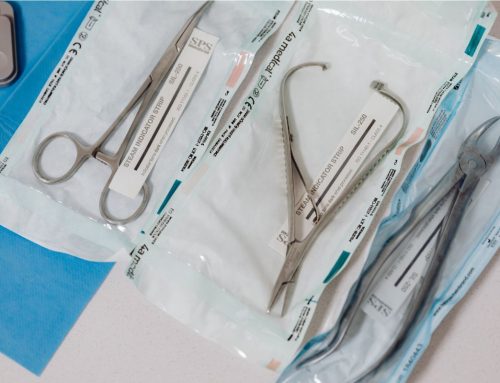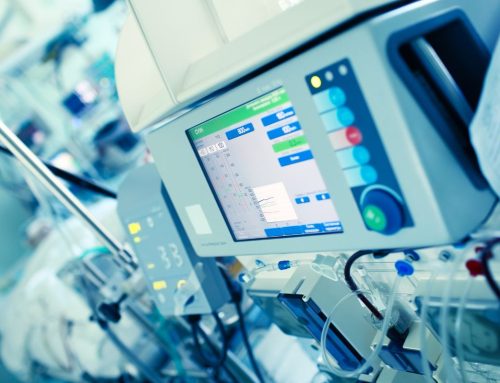Plastics have become an integral part of the modern healthcare environment. Walk into any medical facility, and you’ll find plastics everywhere, from the waiting room to the operating theater. Their versatility and adaptability have made them indispensable. The U.S. generates approximately 5.9 million tonnes of medical waste annually, of which nearly 1.7 million are plastics.
Among these, single-use plastics stand out. Single-use plastics are specially designed materials used once and then discarded, ensuring sterility and reducing the risk of contamination. From the clear tubing delivering life-saving fluids to the protective gloves worn by surgeons, single-use plastics play a pivotal role in patient care, showcasing the marriage of innovation and safety in the medical environment.
Types and Applications of Single-Use Plastics
Single-use plastics, as the name suggests, are designed for one-time use. Characterized by their disposability, these plastics prioritize sterility and reduce the risk of cross-contamination. Unlike reusable plastics, which are cleaned and sterilized for repeated use, single-use plastics are discarded after serving their purpose, ensuring a fresh, uncontaminated tool every time. Their applications in the medical field are vast.
Syringes, used for injections or to draw fluids, are often made of this plastic to prevent contamination between patients. IV bags, which hold vital fluids or medications, rely on the purity single-use plastics provide. Similarly, disposable gloves worn by medical professionals during almost every procedure, ensure both the patient’s and the professional’s safety. These are just a few examples, but they highlight single-use plastics’ crucial role in modern healthcare.
The Role of Single-Use Plastics in Medical Manufacturing
Due to their undeniable benefits, single-use plastics have carved out a meaningful niche in medical manufacturing. Foremost among these is sterility. With each use being its first and last, these plastics eliminate the risk of residual contaminants, ensuring pristine conditions for every patient. This inherent sterility translates to cost-effectiveness. Studies show that without the need for rigorous sterilization processes after each use, resources are saved and operational costs reduced.
The convenience factor is also significant. Having ready-to-use, sterile equipment on hand streamlines procedures, reducing preparation time. But beyond these operational benefits, the primary advantage remains patient safety. Using single-use plastics, medical facilities drastically decrease the risks of cross-contamination, ensuring that patients are protected from potential infections and a safer healthcare environment for all.
Advantages of Single-Use Plastics in Healthcare
Single-use plastics have modernized healthcare by streamlining various medical procedures. With equipment ready to use straight out of the package, medical professionals can focus on the task at hand without the added steps of sterilization or preparation.
This efficiency is especially crucial in time-sensitive situations where every second counts. In emergency scenarios, the availability of sterile, single-use tools can make the difference between life and death. Imagine a critical patient requiring immediate intervention; using pre-packaged sterile syringes or IV bags ensures that care is delivered promptly without compromising safety.
Additionally, the risk of cross-contamination is high in chaotic environments where multiple emergencies are being addressed simultaneously. Single-use plastics act as an additional safeguard, ensuring that each patient receives uncontaminated, sterile care, highlighting their indispensable role in modern healthcare settings.
Environmental and Health Concerns
While single-use plastics offer undeniable benefits in healthcare, they also bring forth environmental and health challenges. The most evident concern is the accumulation of plastic waste. As these plastics are designed for one-time use, they contribute significantly to landfill piles, posing long-term environmental threats.
Also, the degradation of certain plastics can release harmful by-products, which may leach into the environment and potentially enter the human body, raising health concerns. This has sparked a debate in the medical community on how to balance the undeniable benefits of patient safety with the pressing need for sustainability.
While single-use plastics ensure sterility and reduce contamination risks, the search is on for alternatives that can provide these benefits without the associated environmental footprint, pushing the boundaries of innovation in medical manufacturing.
Innovations and Alternatives to Single-Use Plastics
The challenges posed by single-use plastics have spurred research into sustainable alternatives. Scientists are delving into biodegradable and compostable plastics that can offer the same sterility but break down harmlessly in the environment. These eco-friendly materials aim to provide the best of both worlds: safety in medical procedures without the lasting environmental impact.
Moreover, there’s a growing focus on innovative recycling and waste management techniques specifically tailored for medical plastics. By refining processes to safely reclaim and repurpose these materials, the medical industry is taking steps towards a future where patient care and environmental responsibility go hand in hand.
Setting New Standards in Healthcare
Single-use plastics have undeniably transformed healthcare, setting new standards in patient safety and procedural efficiency. Their role in ensuring sterility and reducing contamination risks is paramount. However, as we navigate the benefits, it’s essential to address the environmental implications head-on.
The path forward requires a balanced approach that upholds the highest medical standards while also championing sustainability. By embracing innovations and seeking alternatives, the medical community can pave the way for a future where top-tier patient care harmoniously coexists with environmental stewardship.
Contact our team today for more information on how single-use plastics can benefit your healthcare organization.



